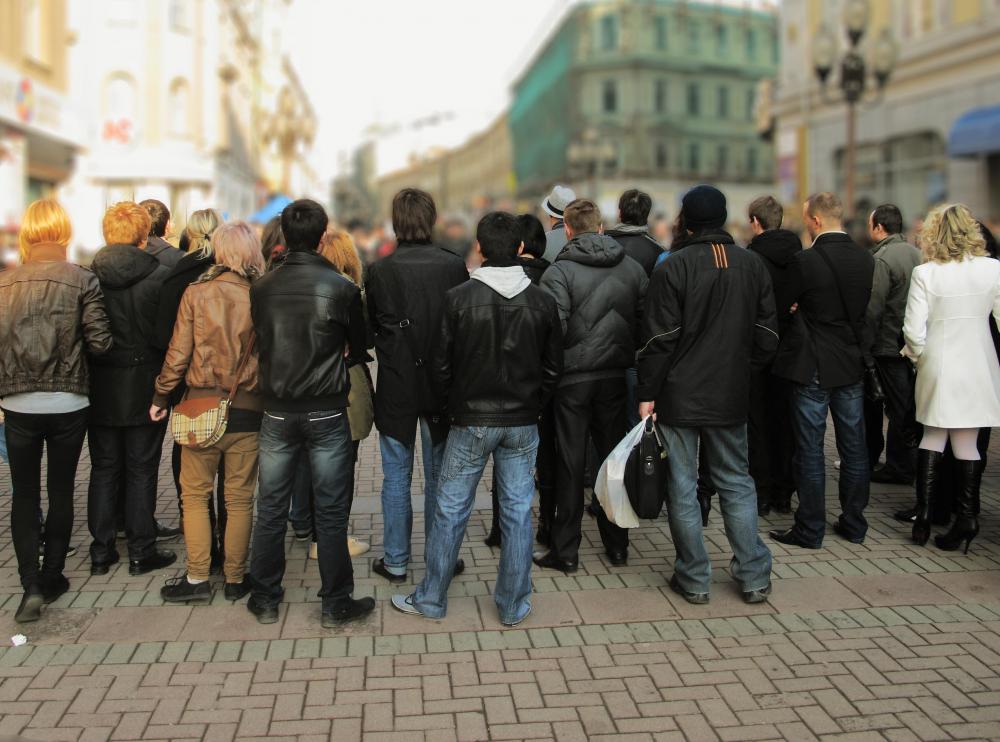At WiseGEEK, we're committed to delivering accurate, trustworthy information. Our expert-authored content is rigorously fact-checked and sourced from credible authorities. Discover how we uphold the highest standards in providing you with reliable knowledge.
What Is Ochlocracy?
Ochlocracy, also known as mob rule, is the term used to describe a form of government. It operates on similar concepts to majoritarianism. Under this idea, control is gained by masses of people as a type of large crowd manipulation.
Crowd psychology is the main concept that comes into play with ochlocracy. This is a form of social psychology that depends on a large group joining and acting together. History is peppered with instances where mob rule has dictated decisions the government or its ruling agents have made. Examples include the public hangings of the suspected Salem witches and lynchings of one type of people by an opposing group.

Group behavior and peer pressure often influence the effectiveness of ochlocracy. Social scientists have identified classical and convergence as the two main theories to explain mob rule and crowd psychology. Each theory is led by the common factor of group mentality, but they differ on how that mentality comes about.
Classical theories of ochlocracy suggest that the individual minds of people form a united way of thinking, but that the crowd forms the people instead of the people forming the crowds. Each member of the group is fueled by the others, and they feed off the emotions of others, increasing their own. The result is a mob that acts completely as one with growing enthusiasm, and each individual loses touch with their original thoughts and intentions.

Convergence theories of ochlocracy operate under the idea that crowds are formed by individuals, each with their own desired goals. Individuals with common goals form groups. They may join for a common reason, yet they each retain their original intentions without being influenced by others. In a large mob group, smaller groups can be seen performing different actions than the mob as a whole. These smaller sub-groups have converged to accomplish their intended goals.

Protests and rallies are modern day examples of ochlocracy. In these instances, groups of people unite to either show support or show objection. When the emotional levels of these crowds gets out of hand, mob mentality becomes evident, particularly when uprisings and rioting occurs.
Peer pressure can also be categorized as a form of ochlocracy. In the same manner as protests and rallies, groups of people in the same age group, social class, or religion can group together for a specific purpose. Mob rule in some form can be seen just as much today as it was centuries ago.
AS FEATURED ON:
AS FEATURED ON:














Discuss this Article
Post your comments